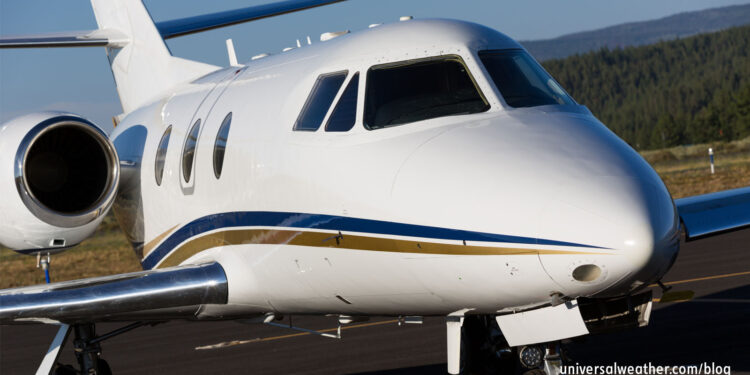Business Aviation Trip Planning Tips: Operating to Japan– Navigating Airport Slots

This is a post by author Hiroshi Higashiyama. Hiroshi is representative director for Universal Aviation Japan, which has aircraft ground handling facilities in Haneda, Narita, Sapporo, and Osaka. Hiroshi is an expert on business aircraft operations in Japan and can be contacted at hiroshihigashiyama@universalaviation.aero.
This aviation blog post is part of a series on operating to Japan and continues from our last article entitled “Business Aviation Trip Planning Tips: Operating to Japan – Fuel, Security, & Additional Services.”
For business aircraft operators, it’s generally not problematic to arrange and revise airport slots for Japan. When operating to the Tokyo area – particularly Tokyo Int.’l, Haneda (RJTT) – availability of airport slots may be somewhat limited at times, and day-of-operation revisions can be more difficult.
The following is an overview of what you need to know about the airport slot process in Japan:
1. Know airport slot requirements for Japan
Airport slots are necessary 24/7 for all airports in Japan, regardless of the type of flight. Airport slot request lead times vary depending on where you’re operating to. Smaller regional airports typically have good last-minute airport slot availability but limited aircraft parking. Hiroshima (RJOA), for example, has just one aircraft parking spot available for General Aviation (GA), so it’s imperative to request parking with as much notice as possible. For larger airports – including RJTT and Narita (RJAA) – it’s recommended to request airport slots by the 15th of the month prior to the date of intended operation.
2. Understand airport slot request options
Priority for airport slots goes first to scheduled commercial operations and then to other airline non-scheduled commercial operations. Japan considers both private non-revenue and charter flights as GA, and these are given lowest airport slot priority. Your best options will be obtained when requesting slots by the 15th of the month prior to operating. Any leftover airport slots, however, may be booked until the last minute. Once an airport slot has been confirmed, it can be transferred to another aircraft (tail number) so long as the operator is the same.
3. Airport slot deviation depends on the airport
Airport slot deviations range from +/- 15 minutes in the case of RJTT to +/- one hour for airports such as RJAA. If an operator exceeds this deviation, JCAB requires a letter from the ground handler explaining the reason for deviation.
4. Know airport slot request procedure
All airport slots are requested by phone in Japan with documentation submitted to the slot coordinator either by fax, e-mail, or mail. RJTT, RJAA, Osaka (RJBB), and Nagoya (RJNA) accept airport slot request documentation via fax, while other airports want documentation to be physically mailed to them in Japanese. In the case of RJAA, you may request airport slots via e-mail, but these requests must be in Japanese. Keep in mind that you’ll need to deal with slot coordinators at each airport. The airport slot request format varies from airport to airport, and all communication must be in Japanese. In most cases you’ll know within a few hours if your airport slot request has been approved. In the case of RJTT, however, it usually takes longer to receive airport slot request confirmations due to the volume of slots they process.
5. Short-notice revisions may be possible
Most airports in Japan, particularly smaller regional airfields, have airport slots available to accommodate short-notice changes. At RJTT, however, it may be difficult to obtain a revised slot due to the large amount of traffic they experience daily. For maximum airport slot revision flexibility – when operating to the Tokyo area – consider RJAA.
6. Be aware of aircraft parking limitations
RJTT limits GA parking to 10 consecutive days. If you intend to stay more than 10 days at RJTT, you’ll need to depart the airport, obtain a new arrival and departure airport slot, and reposition back. RJAA has a parking limitation of 30 days that may be negotiable under certain circumstances. Note that once an airport slot is approved in Japan, aircraft parking is also approved. RJBB and RJNA will assign your aircraft parking spot the day before operations. All other airports, including RJTT, will confirm your parking spot location the moment your airport slot is approved.
Conclusion
Always work with your 3rd-party provider and local ground handler when requesting airport slots for Japan. The slot application process will be more challenging and will require longer lead times if a request is submitted directly by the operator.
Questions?
If you have any questions about this article or need assistance operating to Japan, contact me at hiroshihigashiyama@universalaviation.aero.
Later we will discuss permits and PPRs for your trip to Japan.




